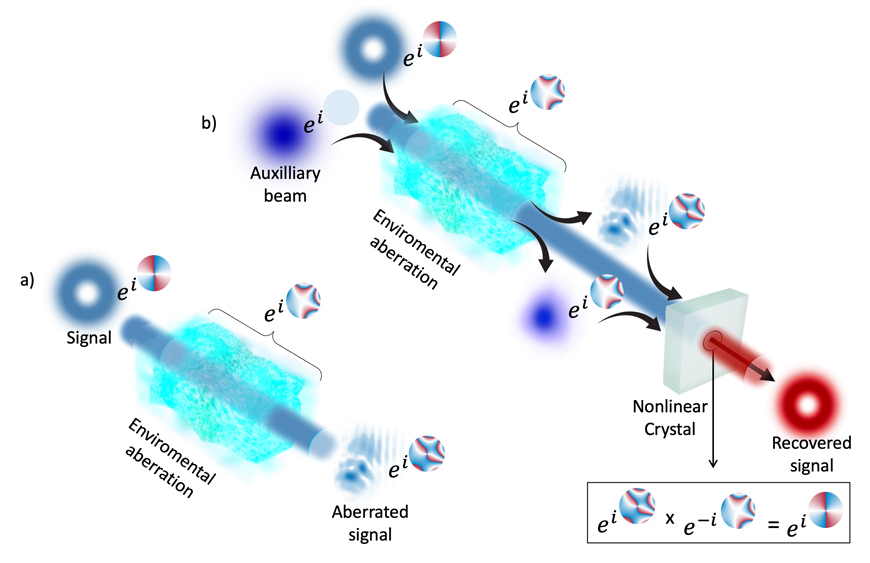Light correcting light
- Wits University
Researchers have found a way to send patterned light messages through obstructions, without distorting the message.
The many properties of light allow it to be manipulated and used for applications that range from very sensitive measurements to communications and intelligent ways to interrogate objects.
Structured light, for instance, can be used as a medium for communication by sending information through fibre optical cables that provide us with internet data. By inserting patterns into the structured light beams, one can vastly increase the amount of data sent through the cables at a time.
“These patterns, can, for instance, resemble shapes such as donuts and flower petals. Patterns with different numbers of petals can represent letters of the alphabet and, when observed on the other side, deliver the message,” says Professor Andrew Forbes, head of the Structured Light Laboratory in the School of Physics at Wits University.
Unfortunately, however, these patterns are subject to interference when passed through unwanted environmental factors such as air turbulence, aberrated optics, stressed fibers or biological tissues, which distort the patterns, making the original information encoded into the patterns ineffective.
To correct the distorted message, the sender of the message conventionally had to re-apply the same distortion to the light, in order to reverse the distortion in the beam, and resending it back into the aberration, allowing this to “undo” itself in the process.

Researchers at Wits, in collaboration with researchers in Italy, have now found a way to keep the integrity of patterned light automatically, by paring the structured light beam – that contains the coded information – up with an unstructured light beam, before sending it through the “noisy” environment. The research was published in Advanced Photonics.
The researchers achieved this by using a process called difference frequency generation, where two beams of light sent into a special type of material, known as a nonlinear crystal, creates another beam which shares the properties of the two inputs.
“By paring these beams together, we have found that by passing them together into a nonlinear crystal, the beams naturally result in the beams correcting each other. The light, in other words, correct the light, thereby keeping the integrity of the original data,” says Forbes. This works even for very complex forms of the aberrations that rendered the initial patterns unrecognizable.
“The output aberration is the difference of the two input aberrations, so that if they are the same then light can correct light with an output after the crystal that is aberration free,” says Forbes.
An exciting aspect of this work is that the correction is automatic and travels with the signal so that patterned light can be corrected in real-time, without the need for knowing what the disturbance is or needing to reapply the same aberration with other, more complex, steps.
“This makes for a ready and compact solution that can be integrated into systems that use these structures for applications ranging from communications to imaging and optical trapping,” says Forbes.
“As a byproduct of the process, there is an added advantage of communicating and detecting with different wavelengths. For instance, sending information with eye-safe wavelengths or interrogating biological samples at penetrating wavelengths, while detecting at wavelengths where technology is well developed for observation.”

